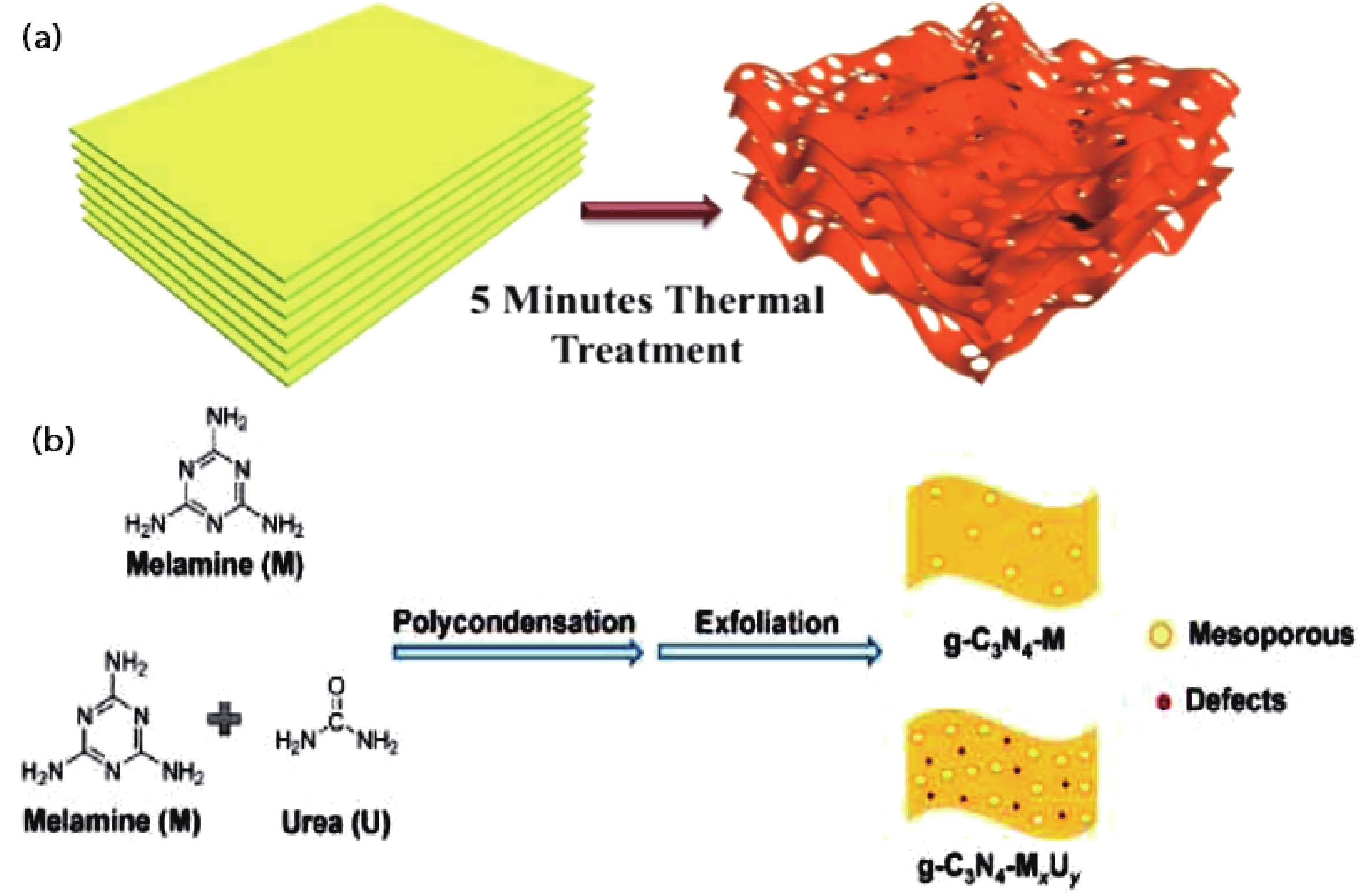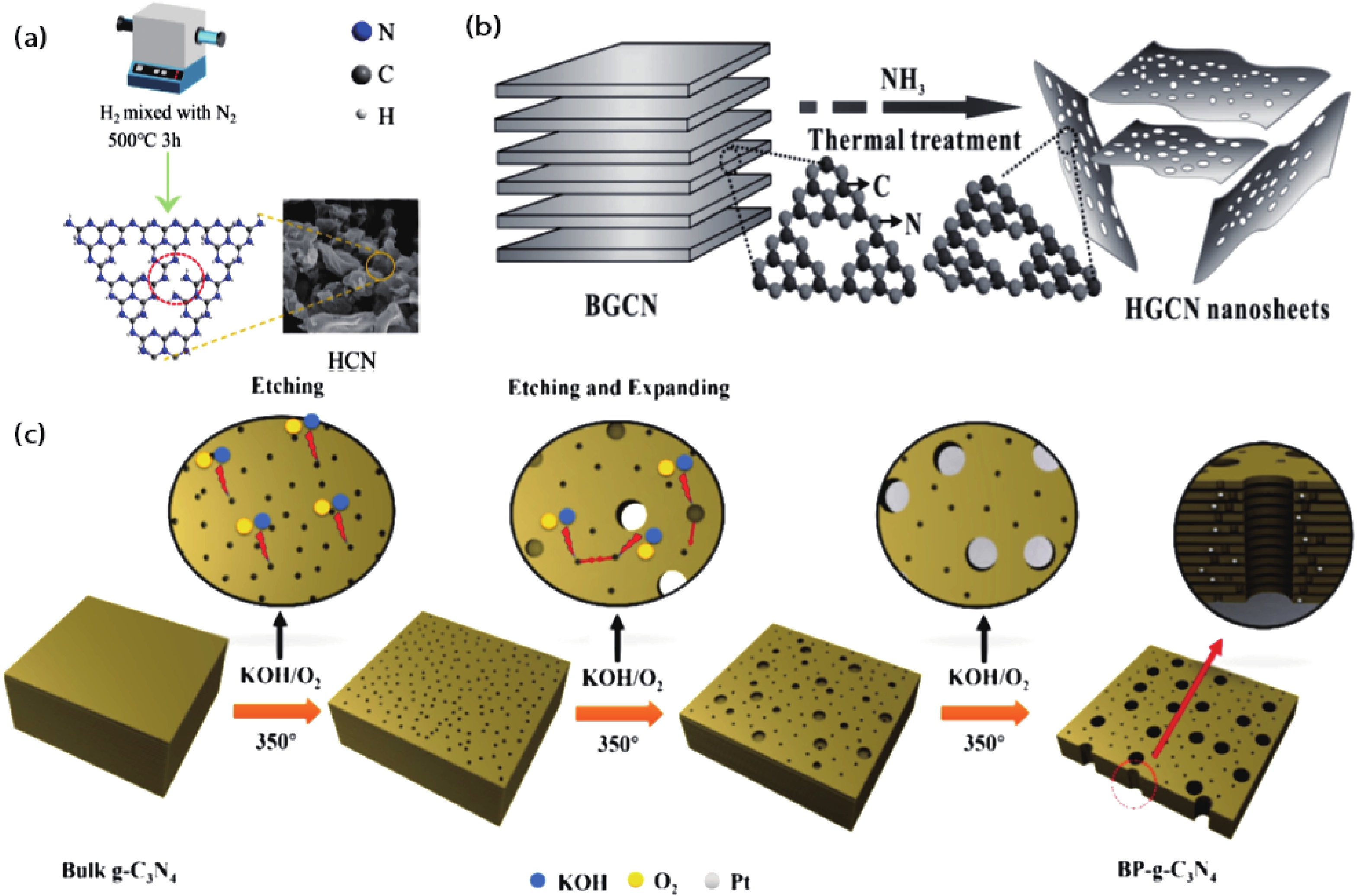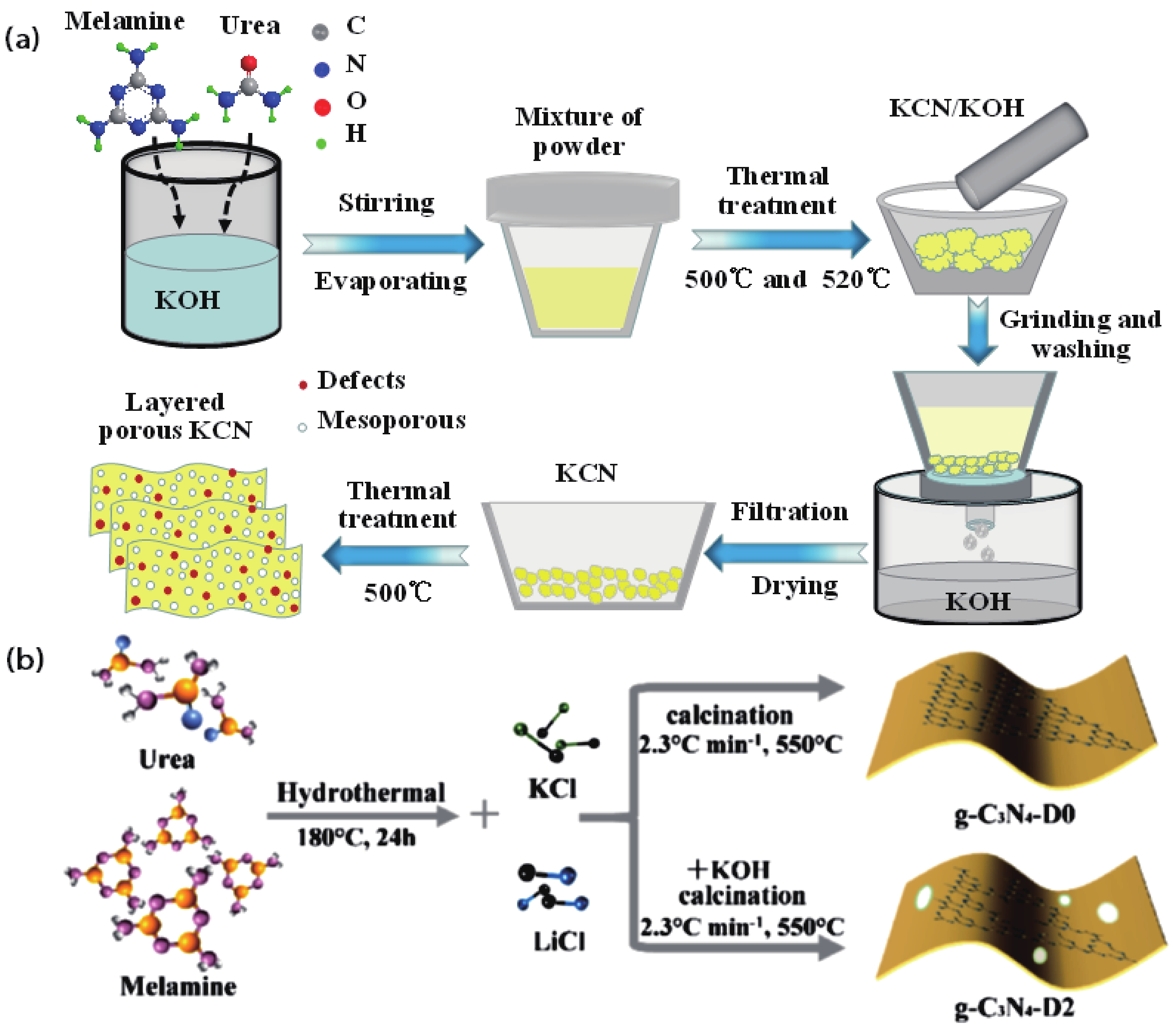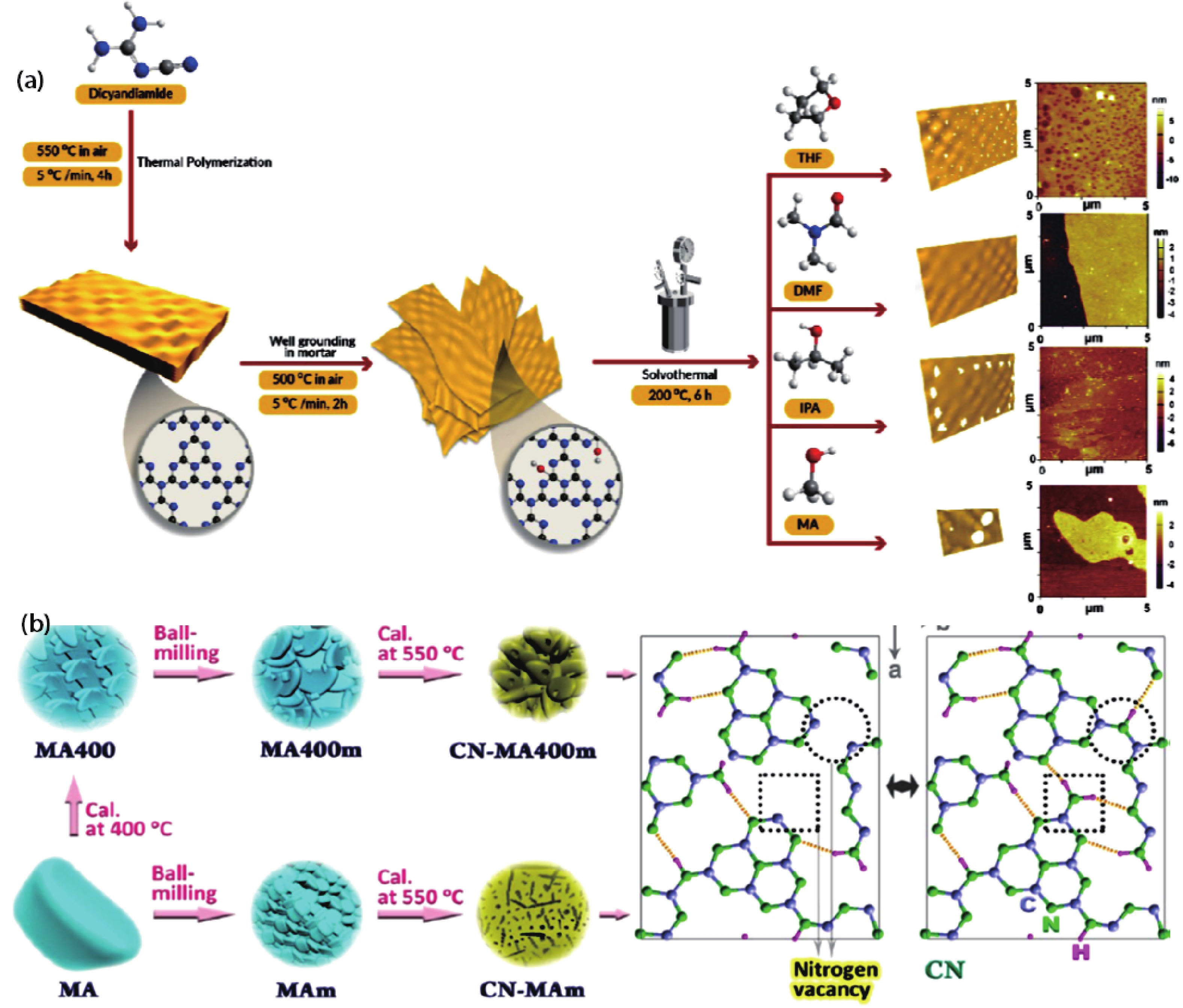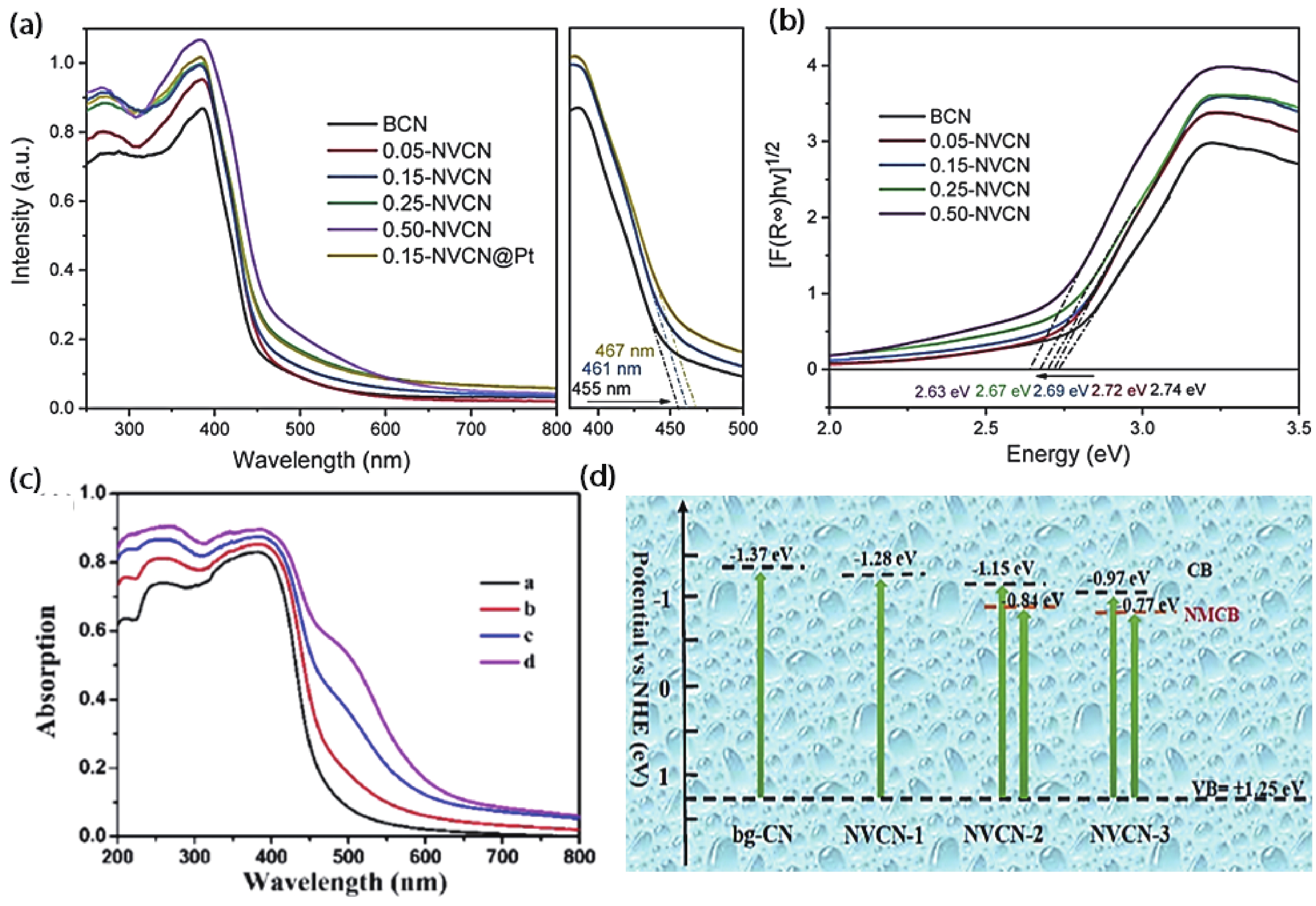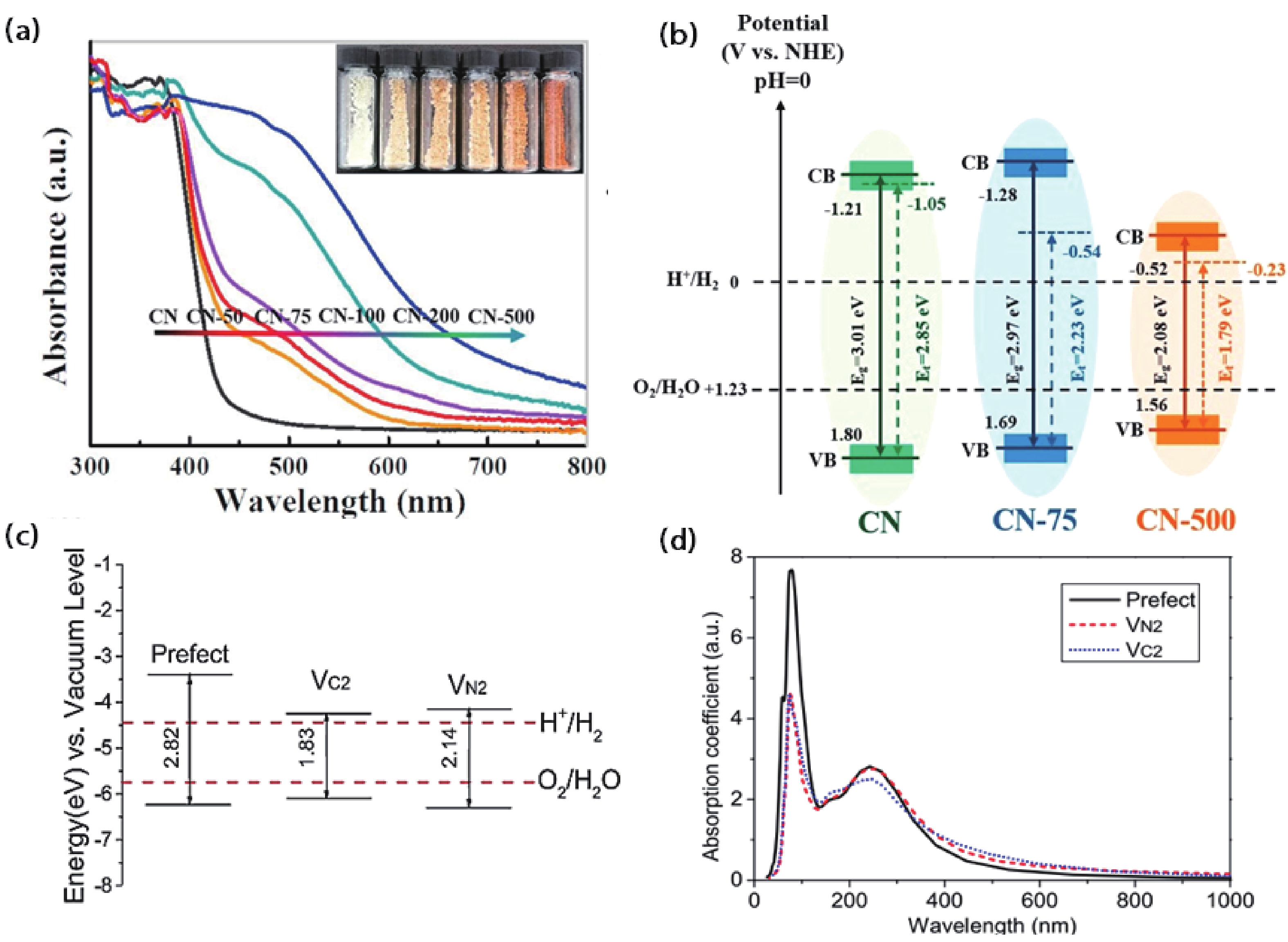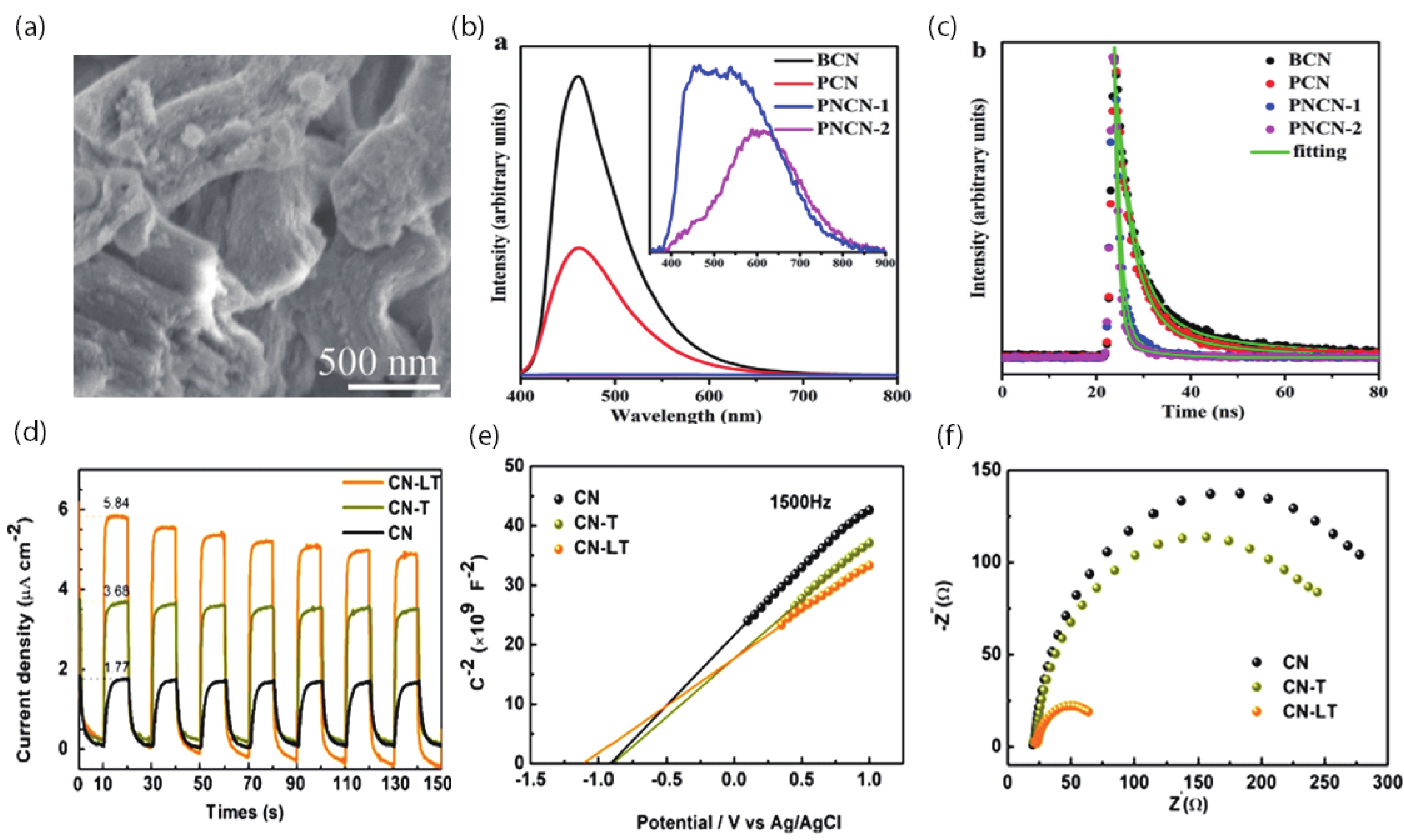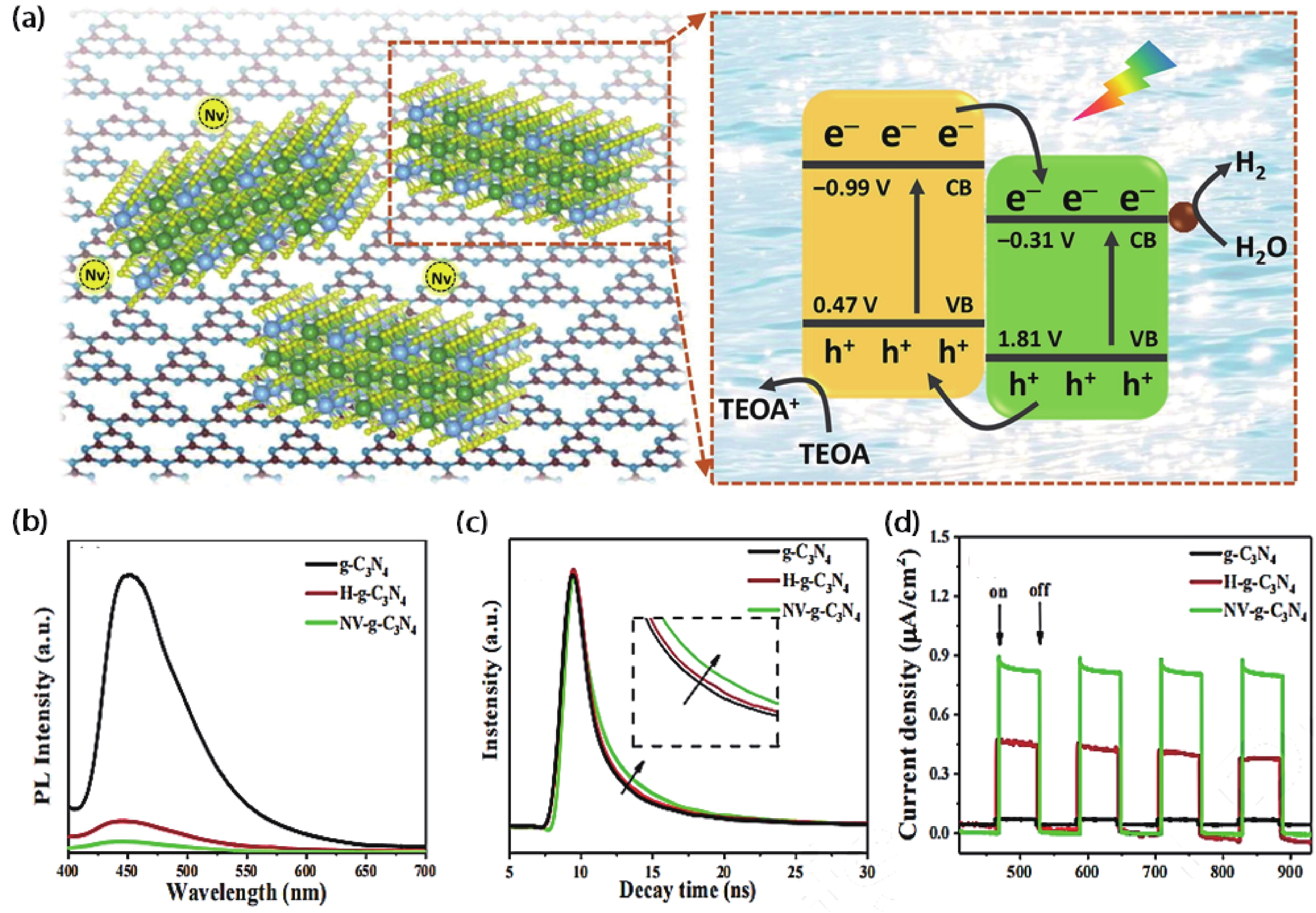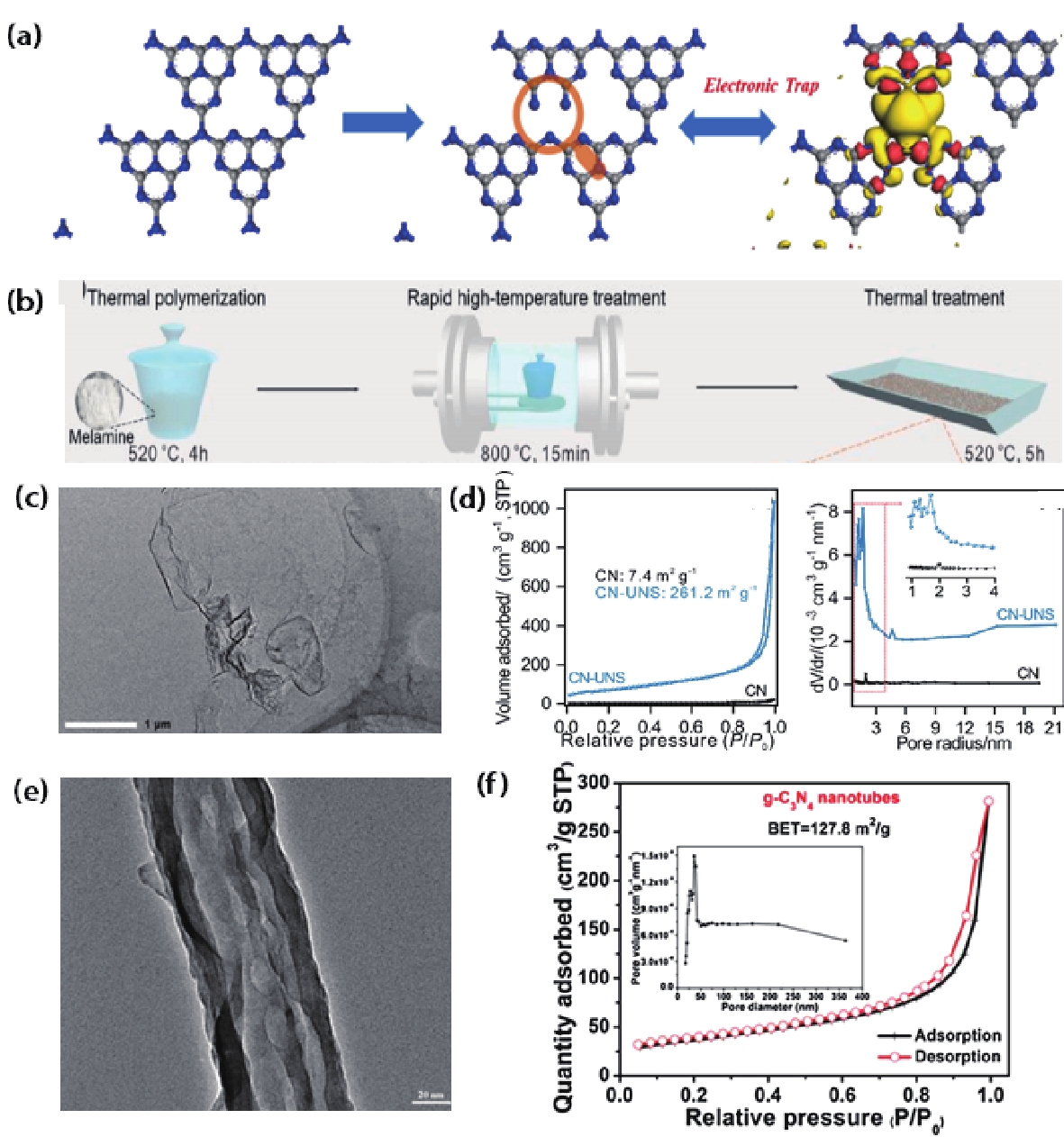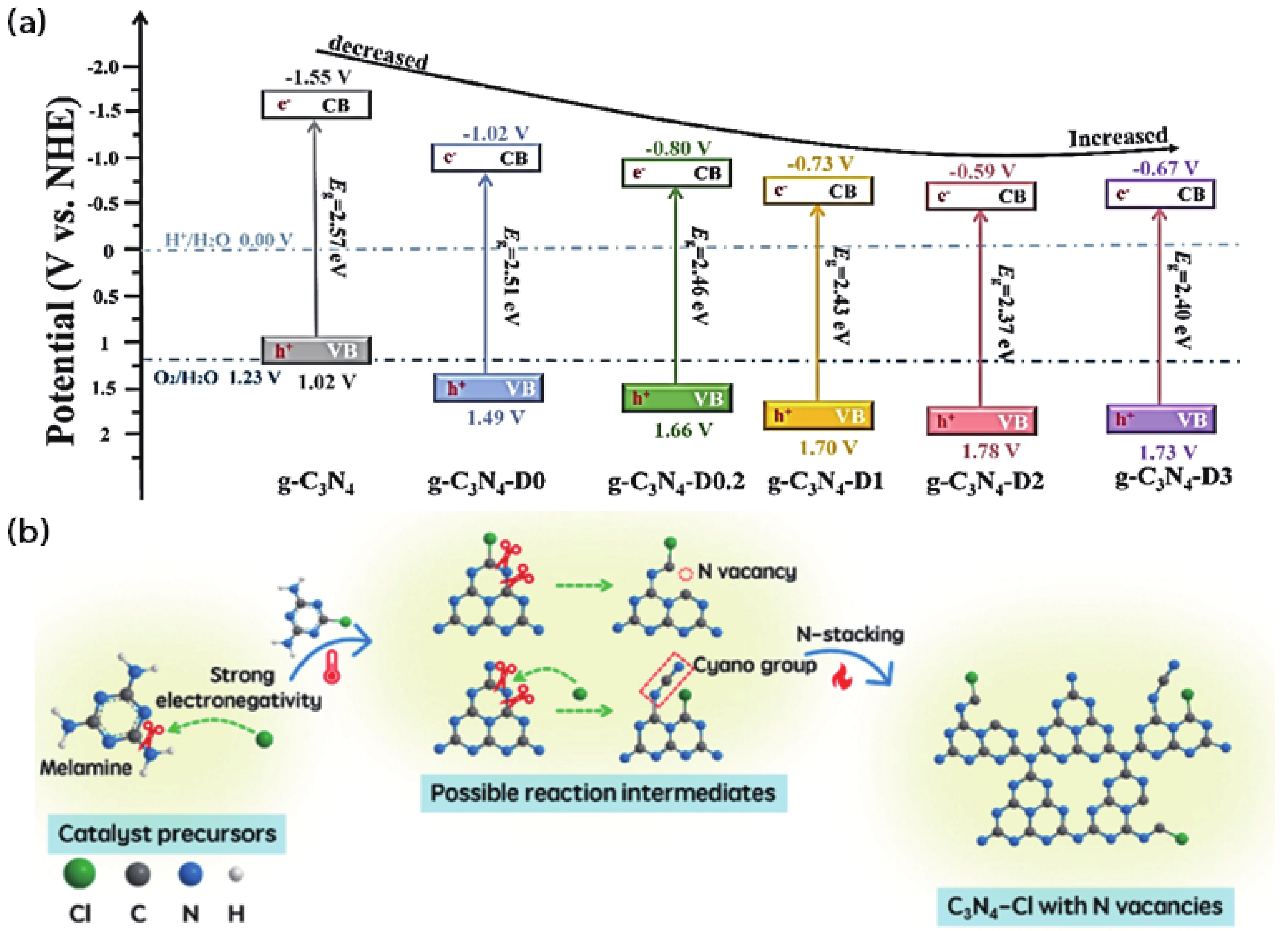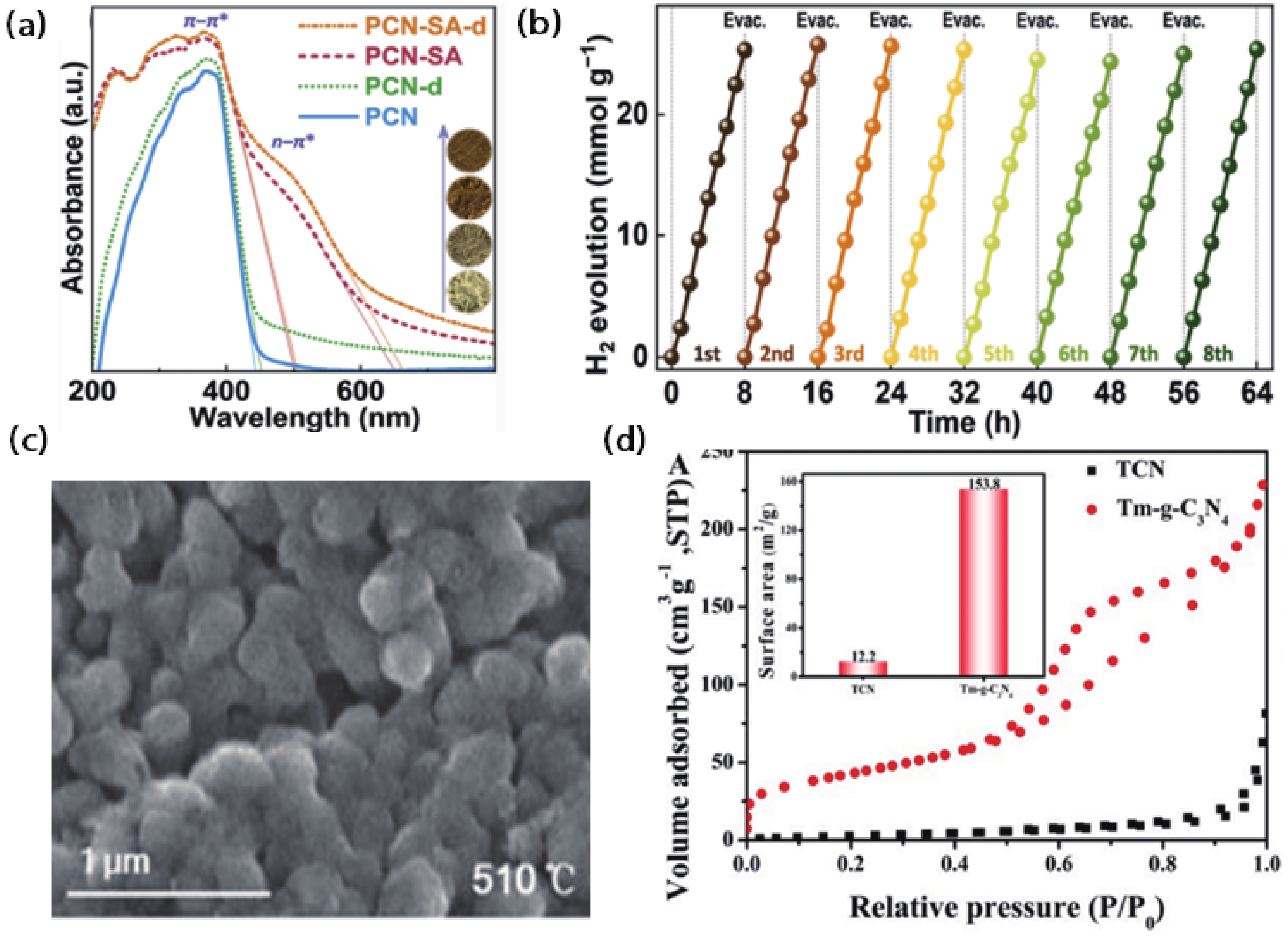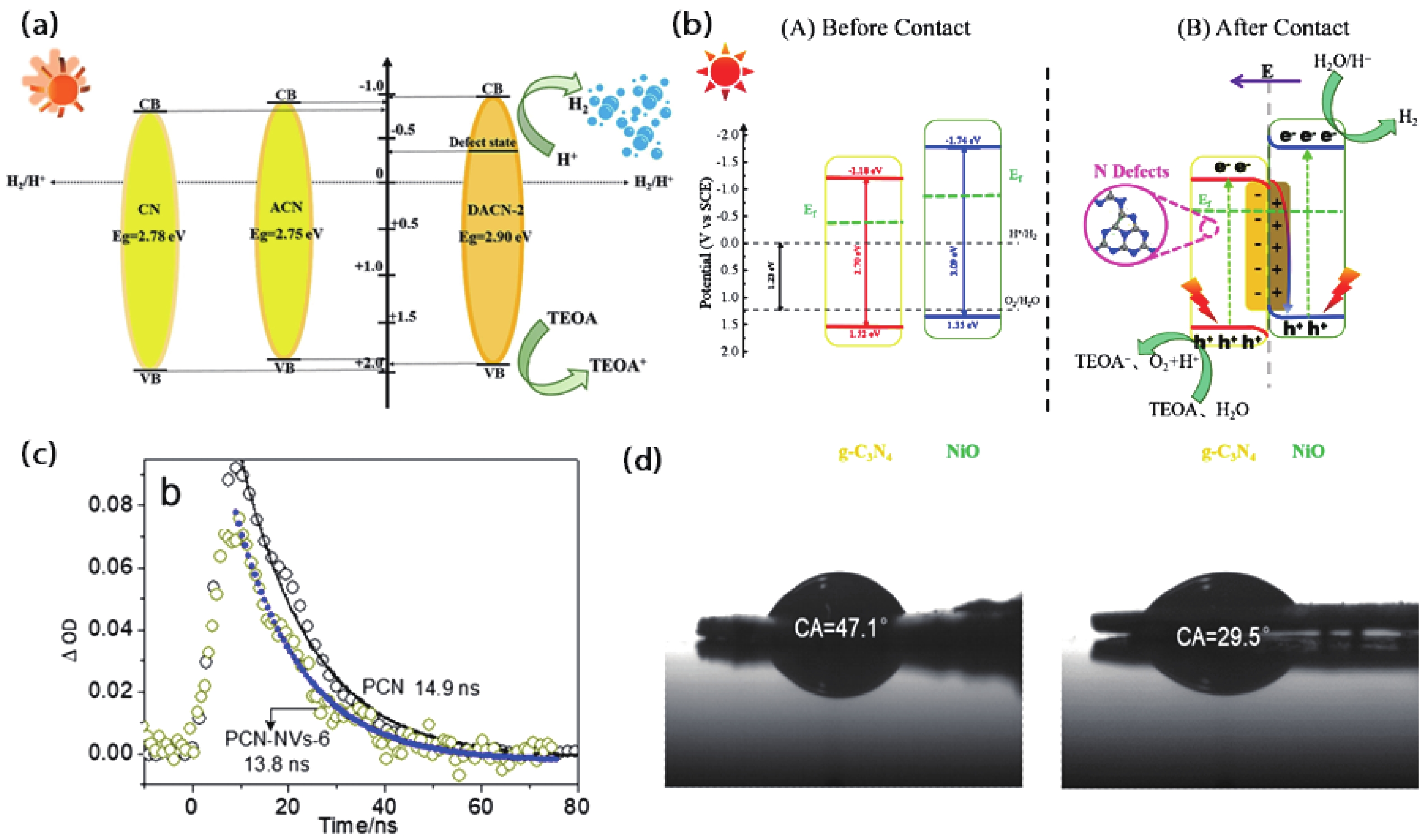| Citation: |
Jie Li, Kaige Huang, Yanbin Huang, Yumin Ye, Marcin Ziółek, Zhijie Wang, Shizhong Yue, Mengmeng Ma, Jun Liu, Kong Liu, Shengchun Qu, Zhi Zhao, Yanjun Zhang, Zhanguo Wang. State-of-the-art advances in vacancy defect engineering of graphitic carbon nitride for solar water splitting[J]. Journal of Semiconductors, 2023, 44(8): 081701. doi: 10.1088/1674-4926/44/8/081701
****
J Li, K G Huang, Y B Huang, Y M Ye, M Ziółek, Z J Wang, S Z Yue, M M Ma, J Liu, K Liu, S C Qu, Z Zhao, Y J Zhang, Z G Wang. State-of-the-art advances in vacancy defect engineering of graphitic carbon nitride for solar water splitting[J]. J. Semicond, 2023, 44(8): 081701. doi: 10.1088/1674-4926/44/8/081701
|
State-of-the-art advances in vacancy defect engineering of graphitic carbon nitride for solar water splitting
DOI: 10.1088/1674-4926/44/8/081701
More Information
-
Abstract
Developing low-cost, efficient, and stable photocatalysts is one of the most promising methods for large-scale solar water splitting. As a metal-free semiconductor material with suitable band gap, graphitic carbon nitride (g-C3N4) has attracted attention in the field of photocatalysis, which is mainly attributed to its fascinating physicochemical and photoelectronic properties. However, several inherent limitations and shortcomings—involving high recombination rate of photocarriers, insufficient reaction kinetics, and optical absorption—impede the practical applicability of g-C3N4. As an effective strategy, vacancy defect engineering has been widely used for breaking through the current limitations, considering its ability to optimize the electronic structure and surface morphology of g-C3N4 to obtain the desired photocatalytic activity. This review summarizes the recent progress of vacancy defect engineered g-C3N4 for solar water splitting. The fundamentals of solar water splitting with g-C3N4 are discussed first. We then focus on the fabrication strategies and effect of vacancy generated in g-C3N4. The advances of vacancy-modified g-C3N4 photocatalysts toward solar water splitting are discussed next. Finally, the current challenges and future opportunities of vacancy-modified g-C3N4 are summarized. This review aims to provide a theoretical basis and guidance for future research on the design and development of highly efficient defective g-C3N4.-
Keywords:
- g-C3N4,
- vacancy defect,
- water splitting,
- photocatalyst,
- charge carrier
-
References
[1] Tao X, Zhao Y, Wang S, et al. Recent advances and perspectives for solar-driven water splitting using particulate photocatalysts. Chem Soc Rev, 2022, 51(9), 3561 doi: 10.1039/D1CS01182K[2] Staffell I, Scamman D, Velazquez Abad A, et al. The role of hydrogen and fuel cells in the global energy system. Energy Environ Sci, 2019, 12(2), 463 doi: 10.1039/C8EE01157E[3] Fujishima A, Honda K. Electrochemical photolysis of water at a semiconductor electrode. Nature, 1972, 238(5358), 37 doi: 10.1038/238037a0[4] Li C, Li J, Huang Y, et al. Recent development in electronic structure tuning of graphitic carbon nitride for highly efficient photocatalysis. J Semicond, 2022, 43(2), 021701 doi: 10.1088/1674-4926/43/2/021701[5] Navalón S, Dhakshinamoorthy A, Álvaro M, et al. Metal–organic frameworks as photocatalysts for solar-driven overall water splitting. Chem Rev, 2023, 123(1), 445 doi: 10.1021/acs.chemrev.2c00460[6] Wang Z, Li C, Domen K. Recent developments in heterogeneous photocatalysts for solar-driven overall water splitting. Chem Soc Rev, 2019, 48(7), 2109 doi: 10.1039/C8CS00542G[7] Ganguly P, Harb M, Cao Z, et al. 2D nanomaterials for photocatalytic hydrogen production. ACS Energy Lett, 2019, 4(7), 1687 doi: 10.1021/acsenergylett.9b00940[8] Faraji M, Yousefi M, Yousefzadeh S, et al. Two-dimensional materials in semiconductor photoelectrocatalytic systems for water splitting. Energy Environ Sci, 2019, 12(1), 59 doi: 10.1039/C8EE00886H[9] Ong W J, Tan L L, Ng Y H, et al. Graphitic carbon nitride (g-C3N4)-based photocatalysts for artificial photosynthesis and environmental remediation: are we a step closer to achieving sustainability. Chem Rev, 2016, 116(12), 7159 doi: 10.1021/acs.chemrev.6b00075[10] Liao G, Gong Y, Zhang L, et al. Semiconductor polymeric graphitic carbon nitride photocatalysts: the “holy grail” for the photocatalytic hydrogen evolution reaction under visible light. Energy Environ Sci, 2019, 12(7), 2080 doi: 10.1039/C9EE00717B[11] Lin L, Yu Z, Wang X. Crystalline carbon nitride semiconductors for photocatalytic water splitting. Angew Chem Int Ed, 2019, 58(19), 6164 doi: 10.1002/anie.201809897[12] Lau V W, Lotsch B V. A tour-guide through carbon nitride-land: structure- and dimensionality-dependent properties for photo(electro)chemical energy conversion and storage. Adv Energy Mater, 2022, 12(4), 2101078 doi: 10.1002/aenm.202101078[13] Fu J, Zhu B, Jiang C, et al. Hierarchical porous O-doped g-C3N4 with enhanced photocatalytic CO2 reduction activity. Small, 2017, 13(15), 1603938 doi: 10.1002/smll.201603938[14] Kumar A, Raizada P, Hosseini-Bandegharaei A, et al. C-, N-Vacancy defect engineered polymeric carbon nitride towards photocatalysis: viewpoints and challenges. J Mater Chem A, 2021, 9(1), 111 doi: 10.1039/D0TA08384D[15] Yang J, Wang H, Jiang L, et al. Defective polymeric carbon nitride: Fabrications, photocatalytic applications and perspectives. Chem Eng J, 2022, 427, 130991 doi: 10.1016/j.cej.2021.130991[16] Yu X, Ng S F, Putri L K, et al. Point-defect engineering: leveraging imperfections in graphitic carbon nitride (g-C3N4) photocatalysts toward artificial photosynthesis. Small, 2021, 17(48), 2006851 doi: 10.1002/smll.202006851[17] Ruan D, Kim S, Fujitsuka M, et al. Defects rich g-C3N4 with mesoporous structure for efficient photocatalytic H2 production under visible light irradiation. Appl Catal, B, 2018, 238, 638 doi: 10.1016/j.apcatb.2018.07.028[18] Huang Y, Liu J, Zhao C, et al. Facile synthesis of defect-modified thin-layered and porous g-C3N4 with synergetic improvement for photocatalytic H2 production. ACS Appl Mater Interfaces, 2020, 12(47), 52603 doi: 10.1021/acsami.0c14262[19] Li S, Dong G, Hailili R, et al. Effective photocatalytic H2O2 production under visible light irradiation at g-C3N4 modulated by carbon vacancies. Appl Catal B, 2016, 190, 26 doi: 10.1016/j.apcatb.2016.03.004[20] Xu X, Xu Y, Liang Y, et al. Vacancy-modified g-C3N4 and its photocatalytic applications. Mater Chem Front, 2022, 6(21), 3143 doi: 10.1039/D2QM00604A[21] Takata T, Domen K. Particulate photocatalysts for water splitting: Recent advances and future prospect. ACS Energy Lett, 2019, 4(2), 542 doi: 10.1021/acsenergylett.8b02209[22] Wang Q, Domen K. Particulate photocatalysts for light-driven water splitting: mechanisms, challenges, and design strategies. Chem Rev, 2020, 120(2), 919 doi: 10.1021/acs.chemrev.9b00201[23] Kim J H, Hansora D, Sharma P, et al. Toward practical solar hydrogen production–an artificial photosynthetic leaf-to-farm challenge. Chem Soc Rev, 2019, 48(7), 1908 doi: 10.1039/C8CS00699G[24] Huang Y, Liu J, Deng Y, et al. The application of perovskite materials in solar water splitting. J Semicond, 2020, 41(1), 011701 doi: 10.1088/1674-4926/41/1/011701[25] Kumar S, Karthikeyan S, Lee A F. g-C3N4-based nanomaterials for visible light-driven photocatalysis. catalysts, 2018, 8(2), 74 doi: 10.3390/catal8020074[26] Bai S, Zhang N, Gao C, et al. Defect engineering in photocatalytic materials. Nano Energy, 2018, 53, 296 doi: 10.1016/j.nanoen.2018.08.058[27] Niu P, Qiao M, Li Y, et al. Distinctive defects engineering in graphitic carbon nitride for greatly extended visible light photocatalytic hydrogen evolution. Nano Energy, 2018, 44, 73 doi: 10.1016/j.nanoen.2017.11.059[28] Niu P, Liu G, Cheng H M. Nitrogen vacancy-promoted photocatalytic activity of graphitic carbon nitride. J Phys Chem C, 2012, 116, 11013 doi: 10.1021/jp301026y[29] Han Q, Cheng Z, Wang B, et al. Significant enhancement of visible-light-driven hydrogen evolution by structure regulation of carbon nitrides. ACS Nano, 2018, 12(6), 5221 doi: 10.1021/acsnano.7b08100[30] Niu P, Yin L C, Yang Y Q, et al. Increasing the visible light absorption of graphitic carbon nitride (Melon) photocatalysts by homogeneous self-modification with nitrogen vacancies. Adv Mater, 2014, 26(47), 8046 doi: 10.1002/adma.201404057[31] Li Y, Zhong J, Li J. Rich carbon vacancies facilitated solar light-driven photocatalytic hydrogen generation over g-C3N4 treated in H2 atmosphere. Int J Hydrogen Energy, 2022, 47(94), 39886 doi: 10.1016/j.ijhydene.2022.09.147[32] Liang Q, Li Z, Huang Z H, et al. Holey graphitic carbon nitride nanosheets with carbon vacancies for highly improved photocatalytic hydrogen production. Adv Funct Mater, 2015, 25(44), 6885 doi: 10.1002/adfm.201503221[33] Wang Y, Du P, Pan H, et al. Increasing solar absorption of atomically thin 2D carbon nitride sheets for enhanced visible-light photocatalysis. Adv Mater, 2019, 31(40), 1807540 doi: 10.1002/adma.201807540[34] Hu P, Chen C, Zeng R, et al. Facile synthesis of bimodal porous graphitic carbon nitride nanosheets as efficient photocatalysts for hydrogen evolution. Nano Energy, 2018, 50, 376 doi: 10.1016/j.nanoen.2018.05.066[35] Xie Y, Li Y, Huang Z, et al. Two types of cooperative nitrogen vacancies in polymeric carbon nitride for efficient solar-driven H2O2 evolution. Appl Catal B, 2020, 265, 118581 doi: 10.1016/j.apcatb.2019.118581[36] Yu H, Shi R, Zhao Y, et al. Alkali-assisted synthesis of nitrogen deficient graphitic carbon nitride with tunable band structures for efficient visible-light-driven hydrogen evolution. Adv Mater, 2017, 29(16), 1605148 doi: 10.1002/adma.201605148[37] Shao Y, Hao X, Lu S, et al. Molten salt-assisted synthesis of nitrogen-vacancy crystalline graphitic carbon nitride with tunable band structures for efficient photocatalytic overall water splitting. Chem Eng J, 2023, 454, 140123 doi: 10.1016/j.cej.2022.140123[38] Qin Y, Lu J, Zhao X, et al. Nitrogen defect engineering and π-conjugation structure decorated g-C3N4 with highly enhanced visible-light photocatalytic hydrogen evolution and mechanism insight. Chem Eng J, 2021, 425, 131844 doi: 10.1016/j.cej.2021.131844[39] Zhao D, Dong C L, Wang B, et al. Synergy of dopants and defects in graphitic carbon nitride with exceptionally modulated band structures for efficient photocatalytic oxygen evolution. Adv Mater, 2019, 31(43), 1903545 doi: 10.1002/adma.201903545[40] Zhang D, Guo Y, Zhao Z. Porous defect-modified graphitic carbon nitride via a facile one-step approach with significantly enhanced photocatalytic hydrogen evolution under visible light irradiation. Appl Catal, B, 2018, 226, 1 doi: 10.1016/j.apcatb.2017.12.044[41] Li L, Huang Z, Li Z, et al. Defect-rich porous g-C3N4 nanosheets photocatalyst with enhanced photocatalytic activity. J Mater Sci:Mater Electron, 2021, 32(5), 6465 doi: 10.1007/s10854-021-05363-1[42] Jiang Y, Sun Z, Tang C, et al. Enhancement of photocatalytic hydrogen evolution activity of porous oxygen doped g-C3N4 with nitrogen defects induced by changing electron transition. Appl Catal, B, 2019, 240, 30 doi: 10.1016/j.apcatb.2018.08.059[43] Yu T, Xie T, Zhou W, et al. Fumaric acid assistant band structure tunable nitrogen defective g-C3N4 fabrication for enhanced photocatalytic hydrogen evolution. ACS Sustainable Chem Eng, 2021, 9(22), 7529 doi: 10.1021/acssuschemeng.1c01163[44] Ren H, Yang D, Ding F, et al. One-pot fabrication of porous nitrogen-deficient g-C3N4 with superior photocatalytic performance. J Photochem Photobiol A, 2020, 400, 112729 doi: 10.1016/j.jphotochem.2020.112729[45] Xu C Q, Li K, Zhang W D. Enhancing visible light photocatalytic activity of nitrogen-deficient g-C3N4 via thermal polymerization of acetic acid-treated melamine. J Colloid Interface Sci, 2017, 495, 27 doi: 10.1016/j.jcis.2017.01.111[46] Xiao Y, Tian G, Li W, et al. Molecule self-assembly synthesis of porous few-layer carbon nitride for highly efficient photoredox catalysis. J Am Chem Soc, 2019, 141(6), 2508 doi: 10.1021/jacs.8b12428[47] Dang T T, Nguyen T K A, Bhamu K C, et al. Engineering holey defects on 2D graphitic carbon nitride nanosheets by solvolysis in organic solvents. ACS Catal, 2022, 12(21), 13763 doi: 10.1021/acscatal.2c03523[48] Huo T, Ba G, Deng Q, et al. A dual strategy for synthesizing carbon/defect comodified polymeric carbon nitride porous nanotubes with boosted photocatalytic hydrogen evolution and synchronous contaminant degradation. Appl Catal B, 2021, 287, 119995 doi: 10.1016/j.apcatb.2021.119995[49] Liu G, Shi L, Yao L, et al. In-situ synthesis of defects modified mesoporous g-C3N4 with enhanced photocatalytic H2 evolution performance. Int J Energy Res, 2021, 45(7), 10478 doi: 10.1002/er.6535[50] Wang X, Li Q, Gan L, et al. 3D macropore carbon-vacancy g-C3N4 constructed using polymethylmethacrylate spheres for enhanced photocatalytic H2 evolution and CO2 reduction. J Energy Chem, 2021, 53, 139 doi: 10.1016/j.jechem.2020.05.001[51] Do J-L, Friščić T. Mechanochemistry: A force of synthesis. ACS Cent Sci, 2017, 3(1), 13 doi: 10.1021/acscentsci.6b00277[52] Ba G, Huo T, Deng Q, et al. Mechanochemical synthesis of nitrogen-deficient mesopore-rich polymeric carbon nitride with highly enhanced photocatalytic performance. ACS Sustainable Chem Eng, 2020, 8(50), 18606 doi: 10.1021/acssuschemeng.0c06851[53] Huang K, Li C, Yang J, et al. Platinum nanodots modified nitrogen-vacancies g-C3N4 Schottky junction for enhancing photocatalytic hydrogen evolution. Appl Surf Sci, 2022, 581, 152298 doi: 10.1016/j.apsusc.2021.152298[54] Liang L, Shi L, Wang F, et al. Synthesis and photo-catalytic activity of porous g-C3N4: Promotion effect of nitrogen vacancy in H2 evolution and pollutant degradation reactions. Int J Hydrogen Energy, 2019, 44(31), 16315 doi: 10.1016/j.ijhydene.2019.05.001[55] Wu J, Li N, Fang H B, et al. Nitrogen vacancies modified graphitic carbon nitride: Scalable and one-step fabrication with efficient visible-light-driven hydrogen evolution. Chem Eng J, 2019, 358, 20 doi: 10.1016/j.cej.2018.09.208[56] Sun S P, Wang Y R, Gu S, et al. Effects of vacancies on the electronic structures and photocatalytic properties of g-C3N4. Vacuum, 2022, 206 doi: 10.1016/j.vacuum.2022.111483[57] Tahir M, Sherryna A, Khan A A, et al. Defect engineering in graphitic carbon nitride nanotextures for energy efficient solar fuels production: A Review. Energ Fuel, 2022, 36(16), 8948 doi: 10.1021/acs.energyfuels.2c01256[58] Li Y, He Z, Liu L, et al. Inside-and-out modification of graphitic carbon nitride (g-C3N4) photocatalysts via defect engineering for energy and environmental science. Nano Energy, 2022, 105, 108032 doi: 10.1016/j.nanoen.2022.108032[59] Ma Z, Cui Z, Lv Y, et al. Three-in-One: Opened Charge-transfer channel, positively shifted oxidation potential, and enhanced visible light response of g-C3N4 photocatalyst through K and S Co-doping. Int J Hydrogen Energy, 2020, 45(7), 4534 doi: 10.1016/j.ijhydene.2019.12.074[60] Yang Z, Chu D, Jia G, et al. Significantly narrowed bandgap and enhanced charge separation in porous, nitrogen-vacancy red g-C3N4 for visible light photocatalytic H2 production. Appl Surf Sci, 2020, 504, 144407 doi: 10.1016/j.apsusc.2019.144407[61] Zeng Q, Wang X, Jin M, et al. Nitrogen defects-rich porous graphitic carbon nitride for efficient photocatalytic hydrogen evolution. J Colloid Interf Sci, 2020, 578, 788 doi: 10.1016/j.jcis.2020.06.023[62] Gogoi D, Shah A K, Qureshi M, et al. Silver grafted graphitic-carbon nitride ternary hetero-junction Ag/g-C3N4 (Urea)-g-C3N4 (Thiourea) with efficient charge transfer for enhanced visible-light photocatalytic green H2 production. Appl Surf Sci, 2021, 558, 149900 doi: 10.1016/j.apsusc.2021.149900[63] Zhang X, Zhang R, Niu S, et al. Enhanced photo-catalytic performance by effective electron-hole separation for MoS2 inlaying in g-C3N4 hetero-junction. Appl Surf Sci, 2019, 475, 355 doi: 10.1016/j.apsusc.2018.12.301[64] Xu Y, Wang M, Liu Y, et al. Efficient charge transfer in Co-doped CeO2/graphitic carbon nitride with N vacancies heterojunction for photocatalytic hydrogen evolution. J Colloid Interface Sci, 2022, 627, 261 doi: 10.1016/j.jcis.2022.07.042[65] Liao Y, Wang G, Wang J, et al. Nitrogen vacancy induced in situ g-C3N4 pn homojunction for boosting visible light-driven hydrogen evolution. J Colloid Interf Sci, 2021, 587, 110 doi: 10.1016/j.jcis.2020.12.009[66] Duan Y, Li X, Lv K, et al. Flower-like g-C3N4 assembly from holy nanosheets with nitrogen vacancies for efficient NO abatement. Appl Surf Sci, 2019, 492, 166 doi: 10.1016/j.apsusc.2019.06.125[67] Gao B, Dou M, Wang J, et al. Efficient persulfate activation by carbon defects g-C3N4 containing electron traps for the removal of antibiotics, resistant bacteria and genes. Chem Eng J, 2021, 426, 131677 doi: 10.1016/j.cej.2021.131677[68] Yao Y, Ren G, Li Z, et al. Nitrogen Vacancy-induced deposition of Pd nanoparticles onto g-C3N4 with greatly improved photocatalytic activity in H2 Evolution. Solar RRL, 2021, 5(7), 2100145 doi: 10.1002/solr.202100145[69] Liang L, Shi L, Wang F, et al. g-C3N4 nano-fragments as highly efficient hydrogen evolution photocatalysts: Boosting effect of nitrogen vacancy. Appl Catal A-Gen, 2020, 599, 117618 doi: 10.1016/j.apcata.2020.117618[70] Zhang Y, Huang Z, Dong C L, et al. Synergistic effect of nitrogen vacancy on ultrathin graphitic carbon nitride porous nanosheets for highly efficient photocatalytic H2 evolution. Chem Eng J, 2022, 431, 134101 doi: 10.1016/j.cej.2021.134101[71] Mo Z, Xu H, Chen Z, et al. Self-assembled synthesis of defect-engineered graphitic carbon nitride nanotubes for efficient conversion of solar energy. Appl Catal B, 2018, 225, 154 doi: 10.1016/j.apcatb.2017.11.041[72] Bard A J, Fox M A. Artificial photosynthesis: Solar splitting of water to hydrogen and oxygen. Accounts Chem Res, 1995, 28(3), 141 doi: 10.1021/ar00051a007[73] Niu P, Dai J, Zhi X, et al. Photocatalytic overall water splitting by graphitic carbon nitride. Info Mat, 2021, 3(9), 931 doi: 10.1002/inf2.12219[74] Zhang Q, Chen X, Yang Z, et al. Precisely tailoring nitrogen defects in carbon nitride for efficient photocatalytic overall water splitting. ACS Appl Mater Interfaces, 2022, 14(3), 3970 doi: 10.1021/acsami.1c19638[75] Cao S, Piao L, Chen X. Emerging photocatalysts for hydrogen evolution. Trends Chem, 2020, 2(1), 57 doi: 10.1016/j.trechm.2019.06.009[76] Zhang P, Wu L J, Pan W G, et al. Granular polymeric carbon nitride with carbon vacancies for enhanced photocatalytic hydrogen evolution. Solar RRL, 2021, 5(3), 2000796 doi: 10.1002/solr.202000796[77] Tang H, Xia Z, Chen R, et al. Oxygen doped g-C3N4 with nitrogen vacancy for enhanced photocatalytic hydrogen evolution. Chem–Asian J, 2020, 15(21), 3456 doi: 10.1002/asia.202000912[78] Liu Y, Zhang Y, Shi L. One-step synthesis of S-doped and nitrogen-defects co-modified mesoporous g-C3N4 with excellent photocatalytic hydrogen production efficiency and degradation ability. Colloids and Surfaces A: Physicochem Eng Aspects, 2022, 641, 128577 doi: 10.1016/j.colsurfa.2022.128577[79] Lin Y, Yang Y, Guo W, et al. Preparation of double-vacancy modified carbon nitride to greatly improve the activity of photocatalytic hydrogen generation. Appl Surf Sci, 2021, 560, 150029 doi: 10.1016/j.apsusc.2021.150029[80] Cheng L, Chen F Y, Zhu Z Q, et al. Vacancy-modified g-C3N4 nanosheets via one-step thermal polymerization of thiosemicarbazide precursor for visible-light-driven photocatalytic activity. Mater Chem Phys, 2022, 275, 125192 doi: 10.1016/j.matchemphys.2021.125192[81] Li H, Ning F, Chen X, et al. Effect of carbon and nitrogen double vacancies on the improved photocatalytic hydrogen evolution over porous carbon nitride nanosheets. Catal Sci Technol, 2021, 11(9), 3270 doi: 10.1039/D0CY02453H[82] Ma X, Cheng H. Synergy of Nitrogen Vacancies and Intercalation of Carbon Species for Enhancing Sunlight Photocatalytic Hydrogen Production of Carbon Nitride. Appl Catal B, 2022, 314, 121497 doi: 10.1016/j.apcatb.2022.121497[83] Ng B J, Tang J Y, Ow L Y, et al. Nanoscale p–n junction integration via the synergetic hybridization of facet-controlled Cu2O and defect-modulated g-C3N4-x atomic layers for enhanced photocatalytic water splitting. Mater Today Energy, 2022, 29, 101102 doi: 10.1016/j.mtener.2022.101102[84] Zhu Y, Zhong X, Jia X, et al. Bimetallic Ni–Co nanoparticles confined within nitrogen defective carbon nitride nanotubes for enhanced photocatalytic hydrogen production. Environ Res, 2022, 203, 111844 doi: 10.1016/j.envres.2021.111844[85] Li Y, Zhong J, Li J. Reinforced photocatalytic H2 generation behavior of S-scheme NiO/g-C3N4 heterojunction photocatalysts with enriched nitrogen vacancies. Opt Mater, 2023, 135, 113296 doi: 10.1016/j.optmat.2022.113296[86] Shang Y, Fan H, Chen Y, et al. Synergism between nitrogen vacancies and a unique electrons transfer pathway of Ag modified S-scheme g-C3N4/CdS heterojunction for efficient H2 evolution. J Alloy Compd, 2023, 933, 167620 doi: 10.1016/j.jallcom.2022.167620[87] Luo X, Ma H, Gao J, et al. Nickel-Rich Ni3N Particles Stimulated by Defective Graphitic Carbon Nitrides for the Effective Oxygen Evolution Reaction. Ind Eng Chem Res, 2022, 61(5), 2081 doi: 10.1021/acs.iecr.1c04902[88] Yang P, Wang L, Zhuzhang H, et al. Photocarving nitrogen vacancies in a polymeric carbon nitride for metal-free oxygen synthesis. Appl Catal B, 2019, 256, 117794 doi: 10.1016/j.apcatb.2019.117794[89] Yang X, Tian L, Zhao X, et al. Interfacial optimization of g-C3N4-based Z-scheme heterojunction toward synergistic enhancement of solar-driven photocatalytic oxygen evolution. Appl Catal B, 2019, 244, 240 doi: 10.1016/j.apcatb.2018.11.056[90] Berto T F, Sanwald K E, Byers J P, et al. Enabling overall water splitting on photocatalysts by CO-covered noble metal co-catalysts. J Phys Chem Lett, 2016, 7(21), 4358 doi: 10.1021/acs.jpclett.6b02151 -
Proportional views





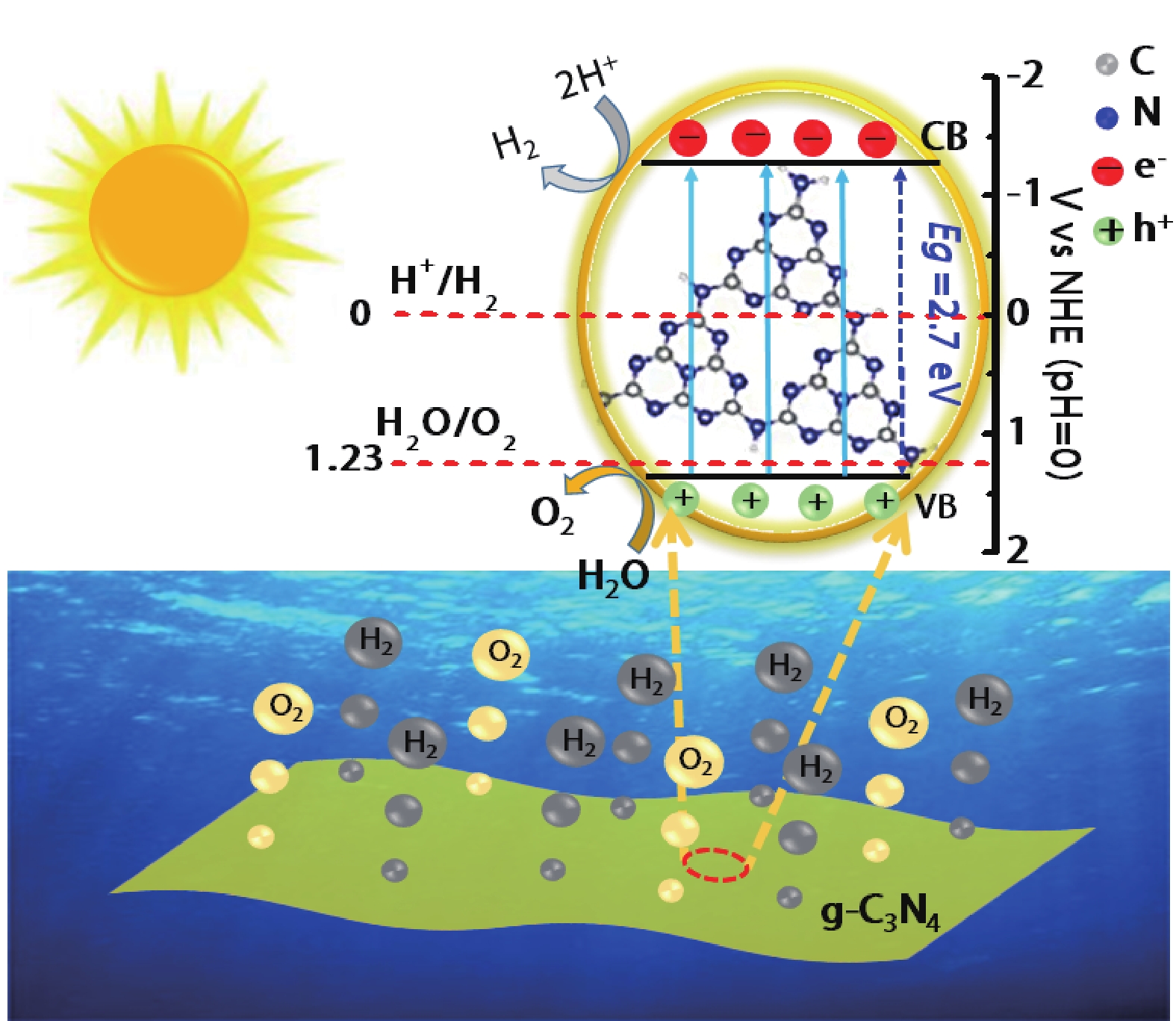
 DownLoad:
DownLoad:
